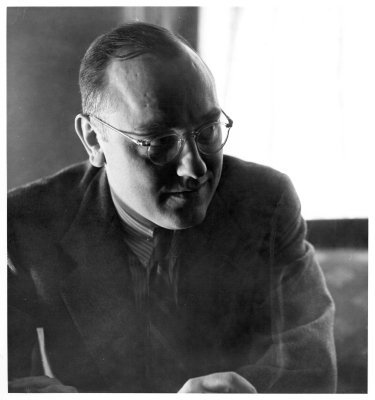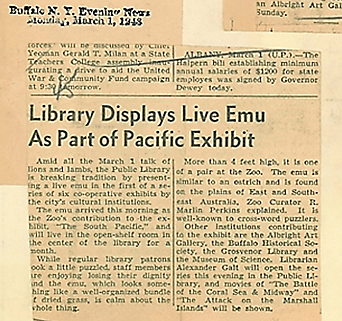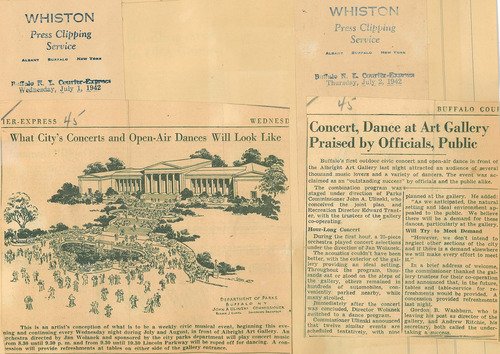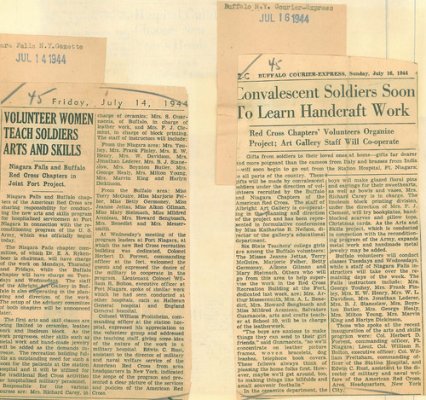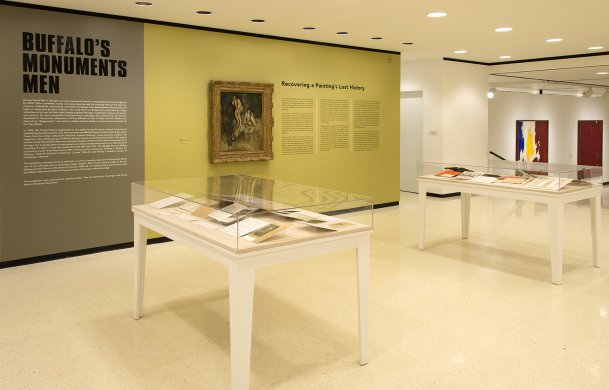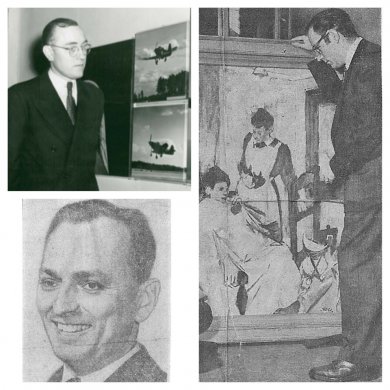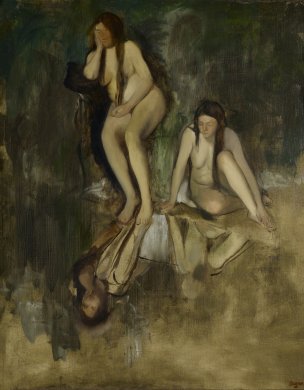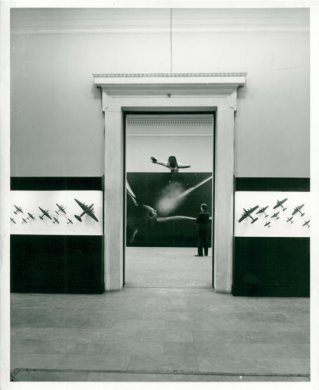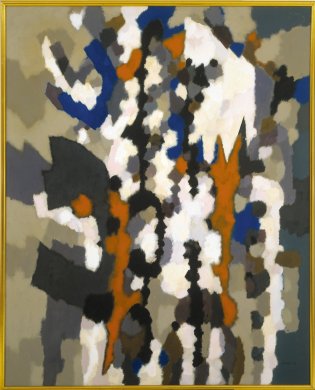The Albright-Knox’s Buffalo’s Monuments Men exhibition (on view in 2014) celebrated three of our past employees—Andrew C. Ritchie, Charles P. Parkhurst, and Patrick J. Kelleher—who helped recover and return art that had been stolen by the Nazis during World War II.
Newspaper clippings—preserved in scrapbooks in the collection of the museum’s G. Robert Strauss, Jr. Memorial Library—show that the museum also helped fight the war on the “home front” through a series of lectures, initiatives, events and exhibitions designed to educate and entertain Buffalo’s citizenry.
In May 1942, the Albright-Knox was the first U.S. museum to adopt a special wartime schedule. The museum stayed open late to provide much-needed relaxation to Buffalonians who faced food and gas rationing, the labor demands of homeland production, and the general stress of war. Under director Gordon B. Washburn, the museum began to organize special wartime lectures and programs. One of these addressed the ways that artists could put their “special talents and skills” to use in defense work.
Other programs considered the role art played in the ennobling of the spirit and the preservation of democracy. Washburn noted in his address to the 1942 graduating class of the Albright Art School that a world at war has a “great need for artists,” who, “like doctors and nurses,” have dedicated themselves to “the cause of man’s salvation, to the freedom of man from enslavement.” Washburn reminded his audience that it was incumbent upon them to use art to “help others understand the world in which we live.”
In June 1942, the Albright hosted Melvyn Douglas, film star and head of the Arts Division of the Office of Civilian Defense. Douglas moderated a panel discussion on the theme “What Kind of Culture are We Fighting For?,” which concluded that the ability of the arts and humanities to inspire and represent humanity was as essential to winning the war as practical and vocational learning.
Shortly after he succeeded Washburn as director in July 1942, Andrew C. Ritchie debuted a slate of wartime programs, including weekly concerts to be held during the summer months on the museum’s lawn.
The concerts proved enormously successful, and would be repeated every summer through 1945, by which time Berlin was a “city of ruins,” and combat in Europe had come to a close.
As an officer in the local chapter of the Red Cross, Andrew C. Ritchie also led the Albright-Knox’s involvement in an art therapy program based in Fort Niagara. The “Arts and Skills” program was designed not only to occupy and stimulate convalescent soldiers during their recovery, but also to cultivate skills and develop talents that might prove useful in gaining employment after the war.
The earliest contest documented in the library’s scrapbooks is a spring 1942 contest, organized by the art committee of the Buffalo section of the Office of Civilian Defense (OCD) to “celebrate the successes” of the locally made Curtiss Wright P-40 Warhawk plane during air combat in Asia. Gordon B. Washburn, the museum’s director and chairman of the OCD art committee, honored the top three selections at a special event at the Albright-Knox, and all the entered posters were exhibited in our galleries.
Later that year, the museum sponsored the “John J. Albright Blood Donor Contest.” Artists of all ages were invited to design a poster that would inspire enough Buffalonians to give blood that the Red Cross could count on two thousand donations per week. As the contest announcement reminded Buffalo’s artists, “You can fight with Paint! This is your job!”
In early 1943, Buffalo’s major cultural institutions began collaborating on a program series titled “The World We Must Know When the Boys Come Home.” Designed to “familiarize persons in the Buffalo area with the locality and conditions of the battle fronts to which American boys are sent,” the series included exhibitions, lectures, concerts, films and other activities drawn from the resources of the Albright Art Gallery, the Buffalo Museum of Science, the Grosvenor Library, the Buffalo Public Library, the Buffalo Historical Society, and the Buffalo Zoological Gardens.
The series ran from March 1943 until April 1944, with installments focusing on the “political, economic, geographical, and zoological” aspects of the South Seas, Latin America, Russia, North Africa, China, France, England, and the “Netherlandish Indies."
In addition to the expected array of art works, books, cultural artifacts, and scientific specimens, the exhibitions included live animals contributed by the Buffalo Zoo. The connection between the animal and the featured culture seems to have been tenuous on occasion—while the cobra for North Africa, or the Chinese pheasant for China make sense, the use of hamsters to represent Russia is a bit perplexing!
Nevertheless, contemporary newspaper accounts of librarians charmed by Emil the emu, the enthusiasm with which hamster procreation was met, and the exploits of a rooster named Gaulois as he roamed the halls of the Albright Art Gallery must have provided some much-needed levity to Buffalonians during the war.
